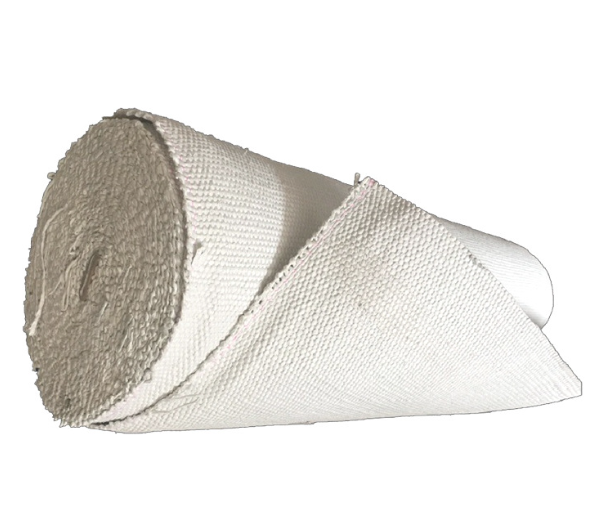Ceramic fiber cloth is a high-performance refractory insulation material, widely used in metallurgy, chemical industry, electric power, aerospace and other fields. Correct use of ceramic fiber cloth can not only improve its performance, but also extend its service life. In this article, we will introduce the use of ceramic fiber cloth and techniques in detail to help you give full play to its advantages.
1. Installation and fixation of ceramic fiber cloth
When installing ceramic fiber cloth, you should make sure that it fits flat and avoid wrinkles or looseness. It can be fixed with high temperature resistant stainless steel wire, ceramic fiber rope or special fixture. If used for pipe or equipment wrapping, it is recommended to use multiple layers of ceramic fiber cloth stacked to improve the heat insulation effect. Care should be taken to avoid excessive stretching during installation so as not to affect its structural strength.

2. Cutting and processing of ceramic fiber cloth
Ceramic fiber cloth is soft and easy to cut and shape. It can be easily cut with scissors or a hobby knife, but it is recommended to wear a dust mask and gloves to reduce the irritation of fiber dust. For complex shapes of equipment, measure the size first and then cut accurately to ensure that the ceramic fiber cloth closely fits the surface of the equipment.
3. Temperature resistance range control of ceramic fiber cloth
Different models of ceramic fiber cloth have different temperature resistance, usually can withstand high temperature of 800℃~1600℃. Before use, be sure to confirm its maximum temperature resistance value to avoid over-temperature resulting in material damage. For example, standard ceramic fiber cloth is suitable for environments below 1000℃, while high alumina or zirconium-containing ceramic fiber cloth can withstand higher temperatures.
4. Maintenance and Cleaning of Ceramic Fiber Cloth
Ceramic fiber cloth may accumulate dust or become slightly damaged during use. If cleaning is needed, use compressed air to blow or soft bristle brush to brush lightly, avoid washing, because the moisture may affect its heat insulation performance. If localized damage is found, it should be repaired or replaced in time to ensure safety and heat insulation effect.
5. Precautions for safe use of ceramic fiber cloth
Since ceramic fiber cloth contains fine fibers, protective gloves, masks and goggles should be worn during operation to avoid skin or respiratory tract contact with fiber dust. In a high temperature environment, it should be ensured that the ceramic fiber cloth is firmly fixed to prevent it from falling off due to wind or vibration.
Conclusion
Ceramic fiber cloth is an ideal material in the field of high-temperature thermal insulation, and its correct use can significantly improve its performance and life. Through reasonable installation, fixing, maintenance and safety protection, you can ensure that the ceramic fiber cloth to play the best effect. Whether it’s industrial furnace lining, pipe insulation, or fire protection, mastering these tips will allow you to use ceramic fiber cloth more efficiently.


